I would like to subtract one shape from another, and then combine the resulting shape with another shape. In my example a square is to be clipped in half and that clipped version is to be extended by a half circle to the right.
So I subtract one square from the other via difference and make a union with the whole circle assuming that overlapping areas will just merge.
I'm thinking in terms of set operations where ({1,2,3,4} / {3,4}) U {2,3} equals {1,2,3} but in my implementation it equals {1,3}:
import Diagrams.Backend.SVG.CmdLine
{-# LANGUAGE NoMonomorphismRestriction #-}
{-# LANGUAGE FlexibleContexts #-}
{-# LANGUAGE TypeFamilies #-}
import Diagrams.Prelude
import qualified Diagrams.TwoD.Path.Boolean as B
main = mainWith (combination # fc red # bgFrame 0.1 white)
where
combination :: QDiagram B V2 Double Any
combination = strokePath plusCircle
shorterSquare = B.difference Winding (square 2) (square 2 # translateX 1)
plusCircle = B.union Winding (circle 1 <> shorterSquare)
But I get this:  This is not what I want, I want the half circle merged with the rectangle, and the result to be filled just red with no lines inside.
This is not what I want, I want the half circle merged with the rectangle, and the result to be filled just red with no lines inside.